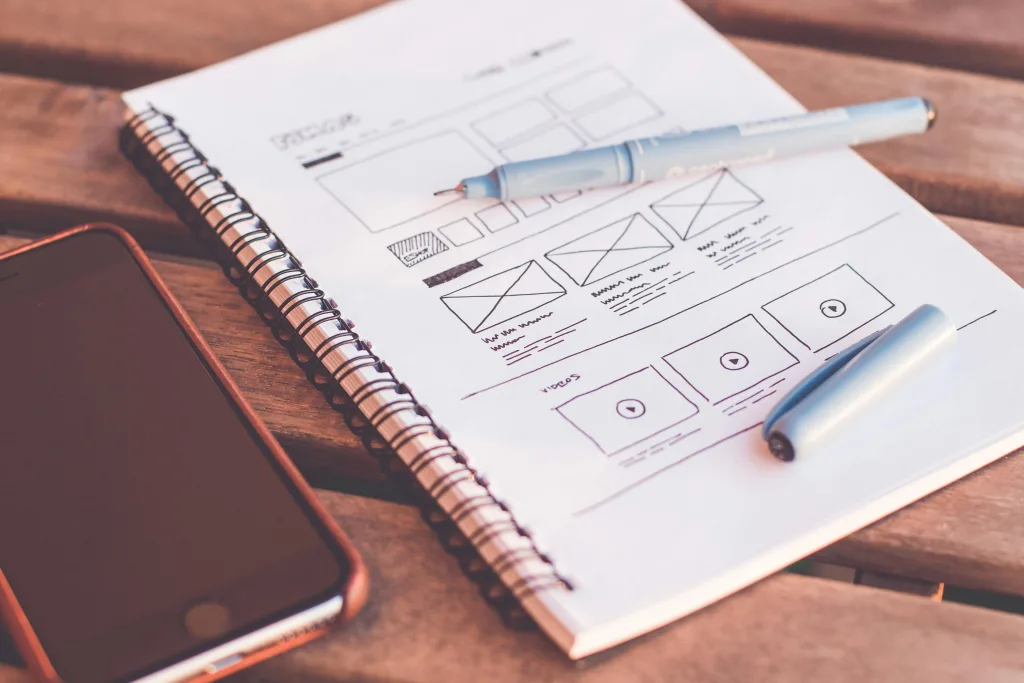Prototyping and testing are (in our opinion) the most exciting stages in the innovation and design process! Here, designers are able to transform abstract ideas into tangible, testable forms, enabling them to gather valuable feedback, iterate, and refine their concepts before scaling to test and ultimately, full implementation. This iterative approach minimizes risks, reduces costs, and increases the likelihood of success in delivering products or services that meet user needs and expectations.
Prototyping helps designers clarify their ideas and visualize potential solutions. By creating physical or digital representations of concepts, designers can communicate their vision more effectively to stakeholders and team members. Testing also aims to validate assumptions, uncover insights, and identify areas for improvement before finalizing the design, however it also typically involves real-world scenarios or user interactions to assess how well the proposed solution meets user needs and addresses the problems at hand. Let’s discuss the two different types of prototyping first, as each serves distinct purposes in the design and development process.
The Low-Fidelity Prototype
This type of prototype is the basic representations of the product or service, often created using pen and paper, cardboard, or digital wireframing tools. They focus on conveying core concepts and functionalities without getting bogged down by details like visual aesthetics or precise interactions. Low-fidelity prototypes are quick and inexpensive to create, making them ideal for exploring ideas, iterating rapidly, and gathering feedback early in the design process. They are especially useful for testing fundamental concepts and validating assumptions before investing significant time and resources into development.
In service design innovation, an example of a low-fidelity prototype could be a paper-based mockup of a mobile banking app you are looking to gather feedback on. In this scenario, you might create simple sketches or wireframes on paper to represent the various screens and user interactions within the new app. The prototype could include basic outlines of different screens such as the login page, account summary, transaction history, and fund transfer interface. Each screen would feature essential elements (buttons, input fields, navigation options, etc.) but would not spend too much time on the detailed design elements or advanced functionality.
With this prototype, you’re able to quickly test the overall flow and usability of the app by conducting testing sessions or walkthroughs with users or stakeholders. Participants can provide feedback on the clarity of the interface, the intuitiveness of navigation, and the effectiveness of key features like transferring funds or viewing account balances. Using this feedback, you can then make iterative improvements, refine the user experience and address any issues before investing in more advanced development stages. This approach allows for rapid experimentation and iteration, ensuring that the final product meets user needs and expectations effectively.
The High-fidelity Prototype
High-fidelity prototypes are highly detailed and closely resemble the final product in terms of functionality, visual design, and interactions. They are typically created using advanced tools and technologies – such as specialized software or 3D printing – to replicate the look and feel of the end product as closely as possible. They are valuable for simulating real-world user experiences and gathering detailed feedback on specific features and functionalities. They are often used in later stages of the design process to refine and validate design decisions before production.
Using the same mobile banking application as a high-fidelity prototype, you would create a comprehensive digital interface that closely resembles the final product in terms of functionality, visual design, and user interactions. It would incorporate realistic design elements, such as branded visuals and consistent user interface patterns, to provide an authentic experience during user testing sessions.
This version would simulate the entire user journey, interacting with it as they would a real mobile banking app, performing tasks like checking their account balances, transferring funds between accounts, and paying bills. Depending on what you are testing for, you might simulate backend systems to demonstrate how the app interacts with the bank’s servers for tasks like account authentication and transaction processing, or ensuring compatibility with different smartphones and tablets.
Essentially, while high-fidelity prototypes offer a realistic representation of the final product for detailed validation, low-fidelity prototypes prioritize speed and flexibility in exploring and refining design ideas. Both types of prototypes have their place in the design process, with each serving different purposes and complementing one another to ultimately create successful products and services.
Drawing Diverse Perspectives Through Testing
When it comes to testing, clearly define what you aim to achieve through testing. Using our app example, determine the specific aspects of the app you want to evaluate, such as usability, functionality, or user satisfaction. In your testing session, identify the target audience and recruit participants who represent your user demographics. Aim for a diverse group of users to capture a broad range of perspectives and experiences. Of course, observe participants’ behavior during testing sessions and take detailed notes. Capture both positive experiences as well as areas for improvement. Use follow-up questions or surveys to gather additional feedback and insights.
As you approach the finish line of the design thinking process at prototyping and testing, keep in mind that even if your tests don’t meet expectations, discovery – even if it is something that’s not working well – is still a win. It means less time devoted on the wrong solution – which is just as valuable as further product development. Remember that these user testing sessions allow your team to leverage the collective expertise and creativity of those that they are designing for. Users provide valuable feedback, suggestions, and ideas that inform the iterative design process, leading to more effective solutions grounded in real insights.
_____
RELATED BLOGS
- 5 Phases of Design Thinking – Prototype
- 5 Phases of Design Thinking – Test
- Case Studies: Innovation Through Government Experimentation
If you are interested in how Spring2 Innovation can help your teams thrive, contact us for more information.
